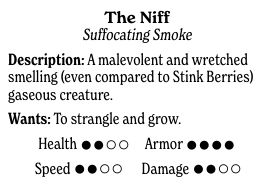Inevitably you will run into monsters. In dungeons this is almost expected. They are arguably the easiest way to introduce conflict for the player characters. Monsters are part of the story.
I often have problems though, when converting some pre-written adventures to the system I want to use or the group I'm playing with. Let's have a look at an example. This is the first room in the Caves of Chaos from Keep on the Borderlands.

For the moment you do not need to understand the stats on the kobolds. You can easily just use a Kobold from your preferred system (most if not all fantasy TTRPG will have some sort of kobold). But the encounter plays way differently when you play it with four level one characters or six.
As a matter of fact, back in the days, adventuring parties were normally bigger than today. Apart from the players, there were often hirelings and henchmen in the party as well. Keep from the Borderlands was designed for 6-9 players. So back then, this was considered probably an easy encounter.

So, when trying to adapt this adventure to your players, you would need to know such things. This isn't something that's plaguing old-school adventures either. Lost Mines of Phandelver had the exact same problem. This lead players creating calculators to balance the encounters. Otherwise you would get the famous TPK on the Goblin Ambush.
Now, you could argue that encounters don't need to be balanced. And this mostly comes from the Old-School camp. But there's a difference between not balanced and not fun or interesting. Stomping the big-bad at the end of the dungeon just doesn't feel satisfying. And let's not forget me as the GM. I want to have fun as well. Gatekeeping my players isn't really fun for me either.
Furthermore the author of the adventure had a specific difficulty, tone or intention behind that encounter.
Is there a better way?
The answer to that has kept my up lately. I don't have a definitive answer, but some ideas.
All started when I was running Desert Tomb Raiders a few times in the past month. The encounter descriptions were pretty minimal. Just a simple low-level or mid-level to describe their difficulty. Now, the issue becomes a bit, what you mean with "level". But it becomes clear, that a lower level should be easier than a higher level.
The difficulty becomes relative instead of absolute. That is way easier to adapt and balance.
What is missing in this kind of description is the amount. Often you have a die attached to it. So let's say 1d6 mid-level monsters. But that suffers from the same issues. I'd rather have something relative, such as many or few. Again it becomes clear, that many, low-level monsters are harder then few, low-level monsters.
And you can scale what many means for different sizes of parties. If you still want to have random numbers in your encounters you can assign a die to to these descriptions. You do this at the very beginning of the campaign and don't have to change it.
| Players | few | several | many | countless |
|---|---|---|---|---|
| 4 | 1d4 | 1d4+2 | 1d6 | 1d10 |
| 6 | 1d6 | 1d6+3 | 1d8+2 | 2d12 |
| 8 | 1d8 | 1d8+4 | 1d12 | 1d20+10 |
The next problem arises, when you have a monster for which you don't have a stat-block in your system. Can I introduce you to the Niff? Never heard of it? Then this makes two of us. It comes from Dragon Town and the Darkness Below by JP Coovert.

In the whole book, you will find these kind of stat-blocks. No numbers. Just four stats that range from 1-4 (denoted by filled circles). You can already imagine, that this monster has a very high armor class. If you encounter this with low level characters or high level characters, it makes it easy for you to adjust. It may have AC16 at lower levels and goes to AC20 or higher.
A similar problem exists for monsters, that are well known, but many variation exist. Best example are dragons. There are different colors and they can have different ages. Which one should I use? Which one did the author think of when designing this adventure? Of course I can look at the stat-blocks, but if I need to convert from one system to another I have to understand both systems. And then I have to find out, what the difference between each type is.
Last thing to mention is, to give monsters special abilities. Even your standard enemy can become way more interesting and memorable if they can do something, nobody else can. Make a Kobold Bard that charms your players. The abilities shouldn't be some other form of damage, but more battlefield or environmental control.
In essence, I wish more relative descriptions of monsters. This allows me to adjust and adapt easier. Yes, I have more work. But then I can run the adventure as intended, not as written.